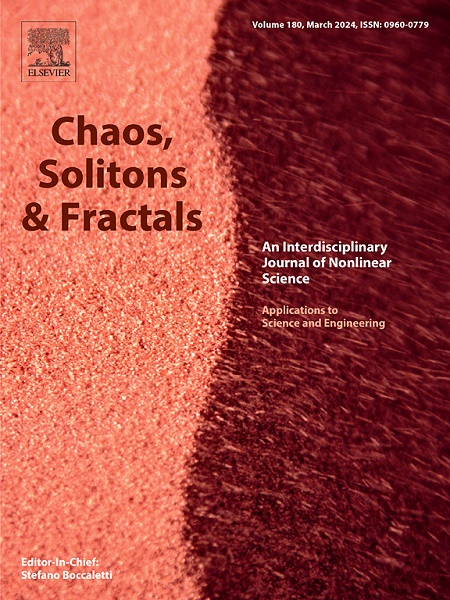探索气候变化下旱地植被的制度变迁:新疆阿勒泰案例研究
IF 5.6
1区 数学
Q1 MATHEMATICS, INTERDISCIPLINARY APPLICATIONS
引用次数: 0
摘要
在旱地生态系统中,更广阔的空间格局不仅直接描绘了研究区域内植被分布的结构,也间接反映了生态系统的恢复能力。气候变化威胁着这些空间格局的演变,凸显了将气候变化纳入研究工作的迫切需要。然而,很少有将植被与气候因子耦合的时空模型来揭示它们的影响。以自然植被模式为研究对象,构建了具有非局部延迟效应的气候-植被耦合动力学模型。利用阿勒泰地区的气候数据,我们的模型再现了与实际模式一致的特征,特别是迷宫结构。气候参数的变化显著改变了植被格局结构和平均生物量。简化模型成功地预测了阿尔泰地区的实际空间结构,并合理地响应了潜在的区域气候变化。我们的模型的进一步发展可以为制定保护这些生态系统的策略提供有价值的工具,并指导在未来气候情景下支持植被模式的保护区选址。本文章由计算机程序翻译,如有差异,请以英文原文为准。
Exploring the regime shifts of dryland vegetation under climate change: A case study of the Altay, Xinjiang
In dryland ecosystems, broader spatial patterns not only directly depict the structure of vegetation distribution within the study area, but also indirectly reflect the resilience of the ecosystem. Climate change threatens the evolution of these spatial patterns, highlighting the urgent need to integrate climate change into research efforts. However, few spatiotemporal models couple vegetation with climate factors to reveal their impacts. We constructed a climate–vegetation coupling dynamical model with nonlocal delay effects, focusing on natural vegetation patterns. Using climate data from the Altay region, our model reproduced features consistent with actual patterns, specifically a labyrinth structure. Variations in climate parameters significantly alter vegetation pattern structures and average biomass. Our simplified model successfully predicts the actual spatial structure of the Altay region, and responds reasonably to potential regional climate changes. Further development of our model could provide valuable tools for formulating strategies to protect these ecosystems and guide site selection for conservation areas that support vegetation patterns under future climate scenarios.
求助全文
通过发布文献求助,成功后即可免费获取论文全文。
去求助
来源期刊

Chaos Solitons & Fractals
物理-数学跨学科应用
CiteScore
13.20
自引率
10.30%
发文量
1087
审稿时长
9 months
期刊介绍:
Chaos, Solitons & Fractals strives to establish itself as a premier journal in the interdisciplinary realm of Nonlinear Science, Non-equilibrium, and Complex Phenomena. It welcomes submissions covering a broad spectrum of topics within this field, including dynamics, non-equilibrium processes in physics, chemistry, and geophysics, complex matter and networks, mathematical models, computational biology, applications to quantum and mesoscopic phenomena, fluctuations and random processes, self-organization, and social phenomena.
 求助内容:
求助内容: 应助结果提醒方式:
应助结果提醒方式:


